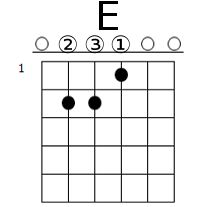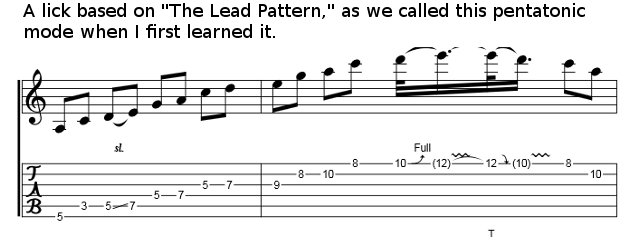“I learned HTML CSS and JavaScript exactly the same way I learned guitar—by stealing other people licks.” 
I’ve said this a few times, but I’m coming to believe my point is largely being missed. I think if the point’s worth anything at all it’s incumbent on me—the communicator—to give it another try.
Developmentally speaking, I learned the standard chords for guitar long before I had a fully actualized my abstract reasoning capabilities. I know this, because I clearly remember I didn’t think of pitch, scale degrees, inversions or harmony when I taught myself guitar at age 9—I thought of shapes. And patterns. I basically looked at music as related to geometry, and controlled by arithmetic.
For example, I knew a finger pattern, it was printed on paper, and I recognized its shape; I learned that everyone called it “E.” By watching better players I noticed if I made the same shape with a different set of fingers it freed my index finger to stretch across and make a “bar chord.” That’s how I understood bar chords at 14. But I also saw other patterns and “transferred” my observations… connected dots.

The “Lead Pattern” —as my community of practice, the other 14-19 yr-olds I jammed with, called it— is a guitar-friendly fingering sequence for a 5-note blues scale. It boils down to a series of fret skips and jumps, of either 3 frets or 2 frets. If you play all the notes on one string, starting on an open string the fret numbers are 0, 3, 5, 7, and 10; the pattern (from wherever you start) is +3+2+2+3. When you understand octaves, you figure out you have to slide up 2 more frets and then the +3+2+2+3 repeats from the 12th fret.
Now when you add the fact that (with one exception we can think about later) at the 5th fret a string sounds like the one next to it. So playing the same fret one string over is like the first +3+2, that’s 5, and I can pick up the pattern where it would have left off. If I stick to single notes I’ve got a blues scale spread across several strings. But wait! If I slide the E chord up the E string in that pattern I get all sorts of cool sounding results, and if I’m 15 I’m willing to spend hours exploring all of them. Is that, “I’m Free,” by The Who? It is!
By the time I was 16 or 17 I’d figured out all of that and made sliding shapes out of A, C and D chords as well. I’d seen first hand it was all I needed to learn that and every other song off “Tommy,” and the first 4 Zeppelin albums too. It wasn’t until I was 18 I decided, all on my own, that I wanted to communicate with musicians in their common language. My circles and networks led me to meet folks who had “ear-training,” some could read music and hear it in their heads like I heard words when reading a book… So for the first time I took formal lessons—and learned what other people called the things I’d been doing for 4 or 5 years. By that time I knew exactly what I wanted to learn, I knew how to recognize the best players to watch and ask, and I knew how to learn by immersing myself in it.
My questions are: Can I make this as easy for others as it seems to me? At what age (if any) is the idea of creating a web app intriguing enough to be intrinsically motivating? At that age, can they do it on their own using videos and written instructions? Probably not, so what else do they need? Assuming adequate support leads to success, does instant gratification lead to a desire to do more, to take the activity further? Can I refine this particular activity to assure it delivers that instant gratification? I’ll find out in a few weeks when I try it in a classroom.Please use the comments section to share your own questions and answers!
So nowadays I’m not entirely worried about teaching HTML before I let kids make a copy/paste web app. It doesn’t have to look like this one right away (or ever!). My questions are: Can I make this as easy for others as it seems to me? At what age (if any) is the idea of creating a web app intriguing enough to be intrinsically motivating? At that age, can they do it on their own using videos and written instructions? Probably not, so what else do they need? Assuming adequate support leads to success, does instant gratification lead to a desire to do more, to take the activity further? Can I refine this particular activity to assure it delivers that instant gratification? I’ll find out in a few weeks when I try it in a classroom.
Now, I don’t mean to imply that there are single answers to any of these questions, or that if it works one place it’s right for everywhere, but if you care to hazard an answer please use the comments.
§
Resources I used
“My VexFlow lets you publish content with beautiful music notation, guitar tablature, and chord diagrams, without the need for special tools. Just type away!” my.vexflow.com My own feeble beginnings are here (my.vexflow.com/articles/96); I love this idea and I hope to learn it, use it and build on it.
Tux Guitar, A Multitrack tablature editor and player tuxguitar.herac.com.ar
Leave a Reply